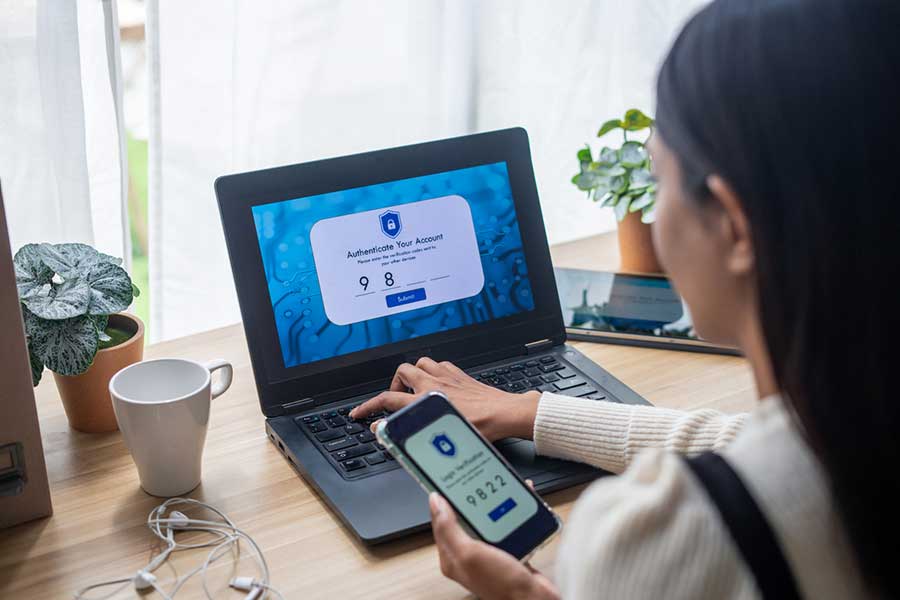Essential Security Tips for a Remote Workforce: Protecting your Organization’s Data

May 08, 2024
SEB Marketing Team
A recent study from StatCan showed that at least 20% of the Canadian workforce is still remote and many employees are seeking flexibility such as a hybrid model. With the continued trend of remote work, organizations face new challenges in ensuring the security of their sensitive data. While employees are focused on the benefits of remote work, organizations of all sizes need to consider the added cyber security measures that are required to protect their assets and data.
Working remotely presents a range of unique cybersecurity risks that organizations must address to safeguard sensitive data and systems such as limited oversight of data handling, susceptibility to phishing, potential use of personal devices for work purposes, and introducing potential security gaps and compliance issues to name but a few. These elevated risks require security awareness. Here are some essential security tips to help organizations safeguard their data and mitigate potential risks.
Multi-factor authentication (MFA): Whether on a mobile device or a laptop, MFA stands as a cornerstone in modern cybersecurity measures, offering an additional layer of protection beyond traditional password-based security. MFA is particularly effective for remote as it requires users to verify their identity through multiple factors such as passwords, biometrics, or authentication tokens, significantly bolstering the security of sensitive accounts and systems.
Managing Passwords and Access: Encourage remote workers to use strong, unique passwords for each account and implement a password manager to securely store and manage passwords. Enforce regular password changes and discourage the reuse of passwords across multiple accounts. Consider implementing single sign-on (SSO) solutions and role-based access controls to streamline access management while minimizing security risks.
Utilizing Company VPN/Firewall: Remote workers should connect to the company network through a Virtual Private Network (VPN) whenever accessing sensitive data or company systems. VPNs are effective because they protect laptops with the same functionality and security as on the company network, especially when the company firewall is configured to provide an extra layer of protection against unauthorized access to the network.
Secure the Home Network: Securing the home network is important for remote workers to protect sensitive company data and systems from cyber threats. Remote workers should ensure family members are not using work devices, that the Wi-Fi networks have strong, unique passwords and enable encryption protocols like WPA2 to prevent unauthorized access. It’s also necessary to update router firmware regularly is essential to patch known vulnerabilities and enhance network security. By taking these proactive measures, remote workers can create a secure home network environment that safeguards both personal and company assets from cyber threats.
Encourage Regular Software Updates: Part of securing the home network is the practise of keeping devices’ operating systems, applications, and security software up to date with the latest patches and updates. Vulnerabilities in outdated software can be exploited by cyber attackers to gain unauthorized access to devices and networks.
Practicing Safe Online Behavior: Educate remote workers about the importance of safe online practices, such as recognizing phishing emails, avoiding suspicious links and attachments, and practicing safe web browsing habits. Provide regular security awareness training sessions for remote workers to educate them about the latest cybersecurity threats, best practices for maintaining security, and how to respond to security incidents effectively. Empowering employees with knowledge and skills to identify and mitigate security risks is critical for strengthening the overall security posture of the organization.
Enhancing the security posture of remote workers minimizes the likelihood of security breaches. Organizations can contribute to a robust remote security strategy by taking proactive measures such as ongoing education and regular monitoring and updating of passwords and software. Incorporating these tips into your organization will further enhance the resilience of your remote workforce against cybersecurity threats and better protect your organization’s sensitive data.
Post navigation
Related Posts

3 Keys to Sustainable Excellence of High-Performance Teams
You spent a considerable amount of capital and time hiring the best engineers, the most…

Your 5-Point Generative AI Policy Checklist for HR and Tech Leaders.
C'est officiel : l'Intelligence Artificielle générative (IAg) n'est plus un concept futuriste—c'est un super copilote…

The Psychological Safety Re-Check: Why Even Top Teams Need a Periodic Vulnerability Audit
You’ve built a rockstar team. They hit their numbers and they crush their goals. Congratulations!…
